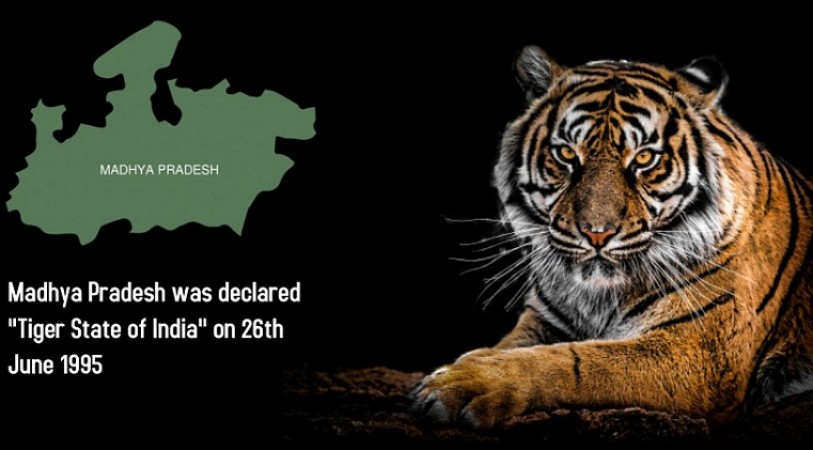
On June 26, 1995, a significant declaration was made that would forever change the conservation landscape in India. Madhya Pradesh, a central state in the country known for its rich biodiversity, was officially declared the Tiger State of India. This announcement marked a milestone in the efforts to protect and preserve the majestic tiger, an iconic and endangered species.
The decision to confer this prestigious title upon Madhya Pradesh was not made arbitrarily. The state had consistently demonstrated its commitment to wildlife conservation, particularly in safeguarding the tiger population. With vast stretches of dense forests and diverse ecosystems, Madhya Pradesh had become a crucial stronghold for tigers, making it an ideal candidate for such recognition.
The tiger, known as the Royal Bengal Tiger, is the national animal of India and holds a significant place in the country's cultural and ecological heritage. However, due to rampant poaching, habitat destruction, and human-wildlife conflicts, the tiger population had witnessed a sharp decline over the years. Recognizing the urgent need for conservation measures, the Indian government launched the ambitious Project Tiger in 1973, with the aim of protecting and increasing the tiger population.
Madhya Pradesh had been at the forefront of these conservation efforts since the inception of Project Tiger. The state boasts several prominent tiger reserves, including Kanha, Bandhavgarh, Pench, Satpura, and Panna. These reserves provide secure habitats for tigers and support a wide range of biodiversity, creating a delicate balance between wildlife and local communities.
The Kanha Tiger Reserve, one of the largest and most well-known reserves in Madhya Pradesh, gained international recognition as the inspiration behind Rudyard Kipling's famous novel, "The Jungle Book." It is home to a significant tiger population, along with other wildlife species such as leopards, sloth bears, and Indian wild dogs. Bandhavgarh, another prominent reserve, has also played a crucial role in tiger conservation and is recognized for its high density of tigers.
The declaration of Madhya Pradesh as the Tiger State of India was a testament to the state's relentless efforts in protecting and conserving tigers and their habitats. It brought attention to the region's unique natural heritage and emphasized the need for sustained conservation measures. The title not only boosted tourism in the state but also raised awareness among the public about the importance of conserving the tiger population and preserving their ecosystems.
Since the declaration, Madhya Pradesh has continued to prioritize tiger conservation, implementing various measures to mitigate threats and promote coexistence between tigers and local communities. It has undertaken initiatives to reduce poaching, improve habitat connectivity, and enhance eco-tourism opportunities, all of which contribute to the long-term survival of tigers.
The recognition of Madhya Pradesh as the Tiger State of India has also inspired other states to ramp up their conservation efforts. Today, several other states in India have made significant progress in protecting tigers and are actively involved in Project Tiger, ensuring a brighter future for this magnificent species.
However, despite the successes achieved, the challenges of conserving tigers persist. Continuous efforts are needed to combat poaching, address habitat loss, and mitigate human-wildlife conflicts. It is essential for governments, conservation organizations, and local communities to work hand in hand to secure the future of tigers in India and preserve the invaluable biodiversity they represent.
The declaration of Madhya Pradesh as the Tiger State of India on June 26, 1995, remains a significant milestone in the conservation history of the country. It stands as a reminder of the collective responsibility we hold to protect and cherish our natural heritage and ensure the survival of these magnificent creatures for generations to come.